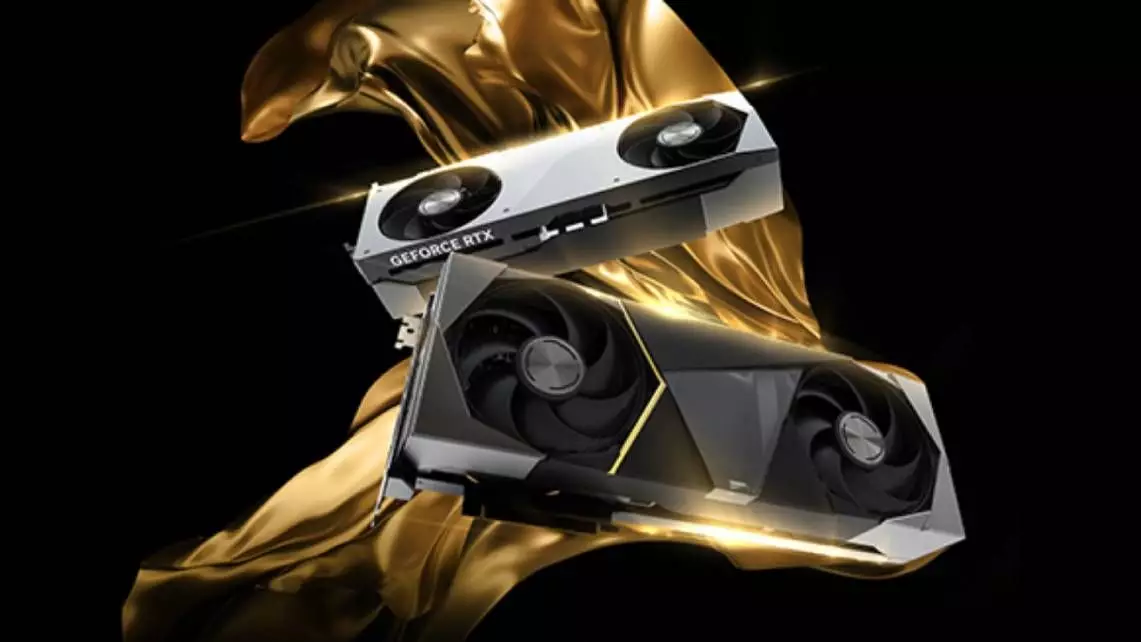The recent launch of the Nvidia RTX 50-series at CES 2025 has ignited considerable excitement within the PC gaming community. Among the most notable introductions is the RTX 5090, which represents a significant leap in performance when compared to its predecessor, the RTX 5080. This advancement has prompted a deeper exploration of how the industry’s leading manufacturers are addressing the cooling demands of such powerful hardware and the implications of these designs on the overall gaming experience.
Price Tags and Performance Gains
The RTX 5090 comes with a staggering price jump from approximately $999 for the RTX 5080 to an eye-watering $1,999 for the 5090 model. Such costs underscore a belief among gamers that the 50-series will offer unparalleled performance. This belief is bolstered by Nvidia’s claims that the RTX 5090 features approximately 33% more cores than its predecessor, increasing from 128 Shader Multiprocessors (SMs) in the RTX 4090 to 170 in the 5090. This escalation translates into substantial improvements, especially with the introduction of the new DLSS 4 technology, which Nvidia promotes as enhancing gameplay significantly by leveraging AI and Tensor cores to optimize rendering efficiency.
However, high performance comes with corresponding demands for effective thermoregulation. As we analyze the design strategies of various brands, it becomes evident they are not taking these cooling challenges lightly.
One of the most apparent responses to the increased heat output of the RTX 5090 is the proliferation of advanced cooling solutions. Gigabyte has adopted a notably aggressive approach by developing its AORUS MASTER variant, which features four fans. Their innovative “Screen Cooling Plus” design introduces an additional bottom-mounted fan to maximize airflow. This strategy illustrates a trend towards more elaborate cooling setups as manufacturers seek to ensure stable performance in the face of extreme thermal conditions.
MSI is not far behind in this cooling arms race. Their GeForce RTX 5090 32G Special Edition boasts an impressive five STORMFORCE FANS, utilizing a advanced blade design aimed at improving both intake and exhaust capabilities. Each fan is engineered with MSI’s FiveFrozr Technology, promising effective thermal management for demanding applications. This departure from traditional cooling solutions—with a focus on maximizing air passage—is a clear indication that manufacturers are recalibrating their designs to meet the growing ambitions of gamers.
Contrarily, Nvidia’s Founders Edition (FE) of the RTX 5090 represents a divergent philosophy, utilizing a dual-fan configuration—a surprising choice in light of competitors’ sprawling fan setups. This raises significant questions: Can a two-fan design counteract the heat generated by such a powerful GPU? The answer might lie within Nvidia’s clever engineering and the capabilities of DLSS 4, which is designed to alleviate some of the computational burdens.
It’s a stark juxtaposition against what might become the norm among aftermarket boards, where multi-fan designs may now dominate expectations. The Founders Edition thus highlights a potential strategy by Nvidia to present a streamlined, compact option—even as it relies heavily on the performance capabilities and efficiency of its software and core technology.
As the dust settles on the announcements from CES 2025, it is essential to consider the long-term implications for gamers. With top-tier models like the RTX 5090 pushing the envelope, enthusiasts may need to reevaluate not only their cooling solutions but also their overall build strategies. The contrasting roadmaps from Nvidia and AIB partners point to an evolving market that increasingly prioritizes performance and cooling efficiency.
The landscape is shifting, reminiscent of major technological revolutions within the industry; as cooling solutions evolve, so too must the expectations of gamers regarding the capabilities and designs of their systems. This moment in time represents an exciting turning point for PC gaming, with the RTX 50-series leading the charge toward an era defined by unprecedented performance and innovation in heat management technology.


Leave a Reply